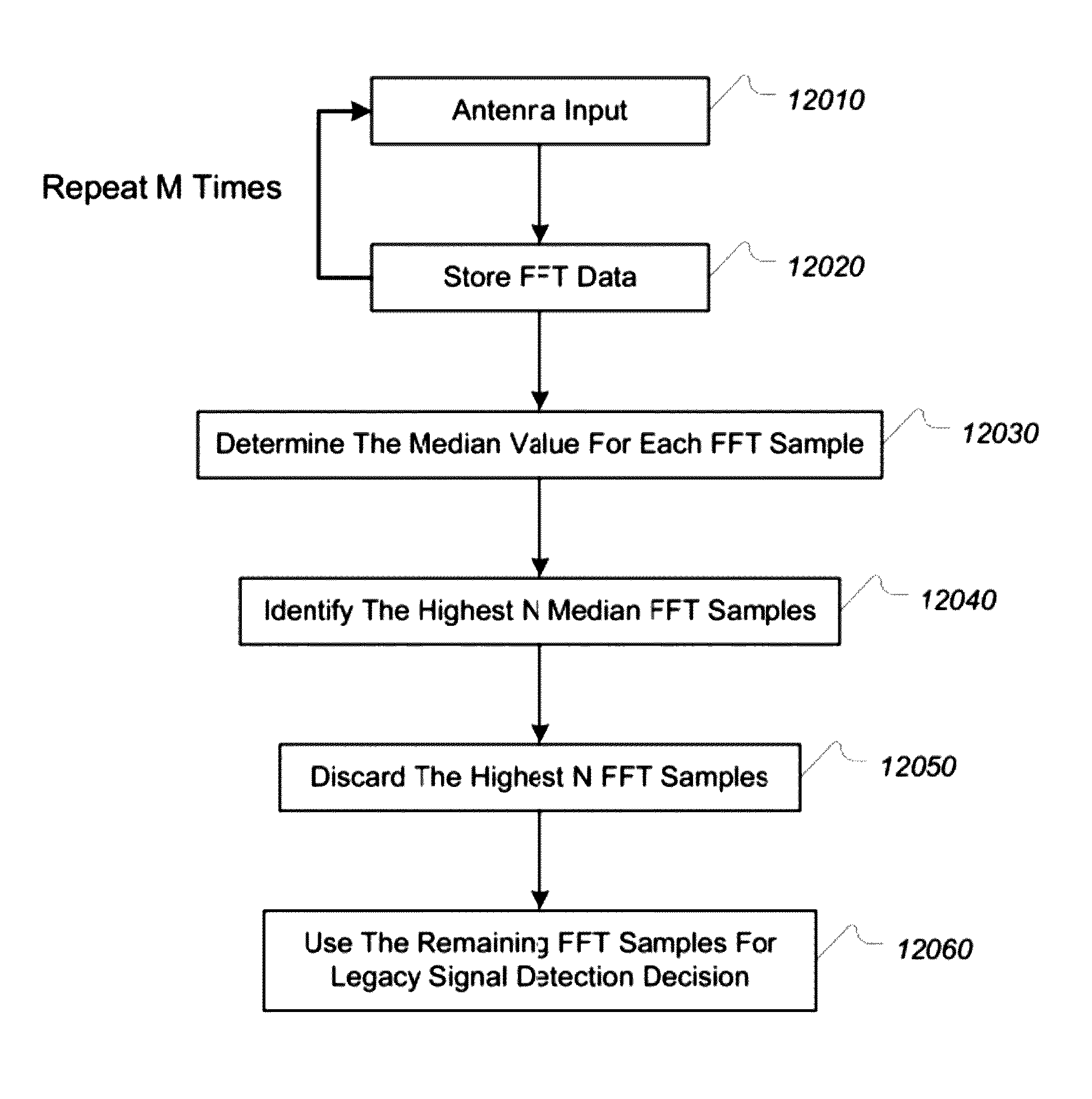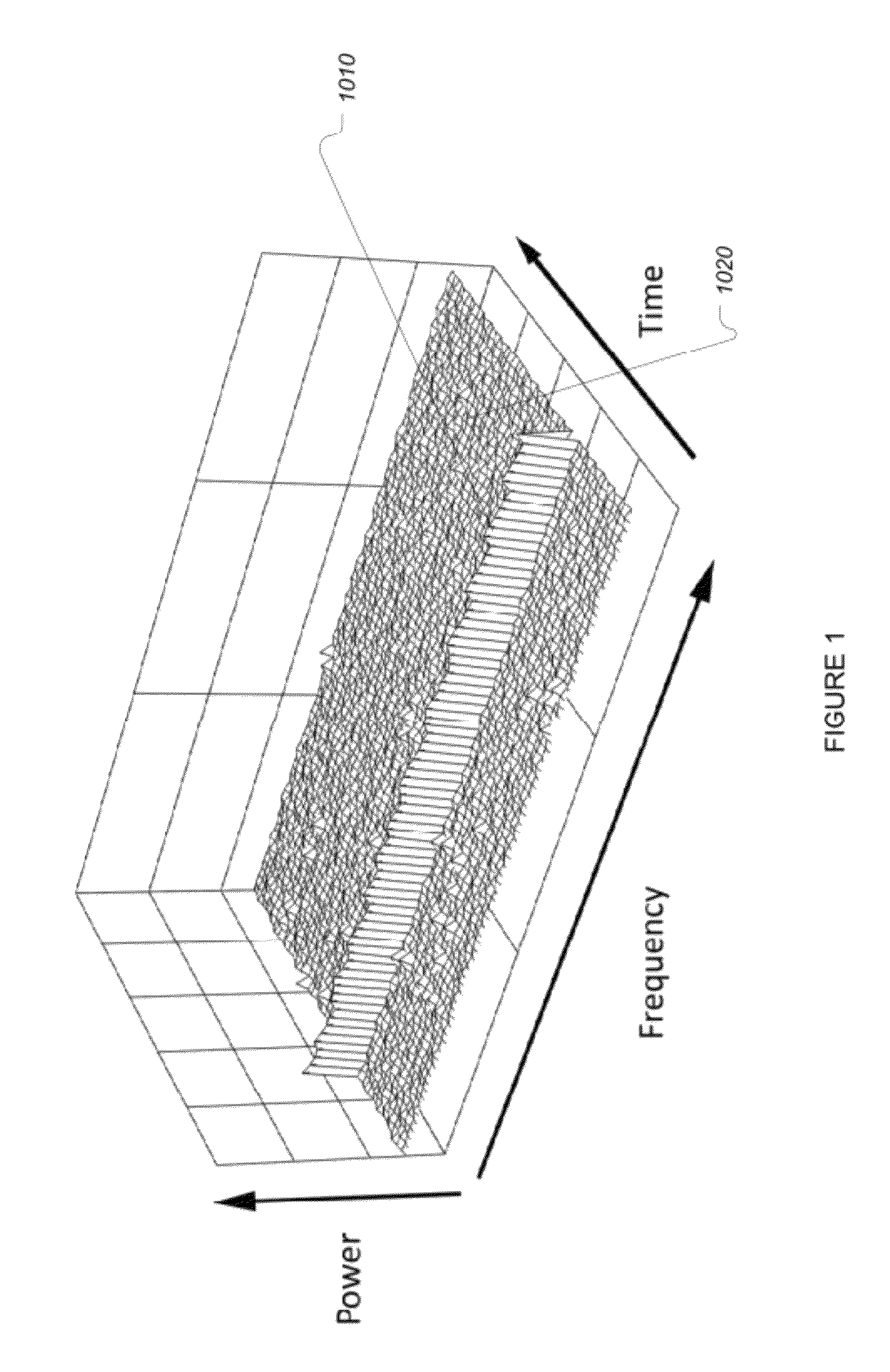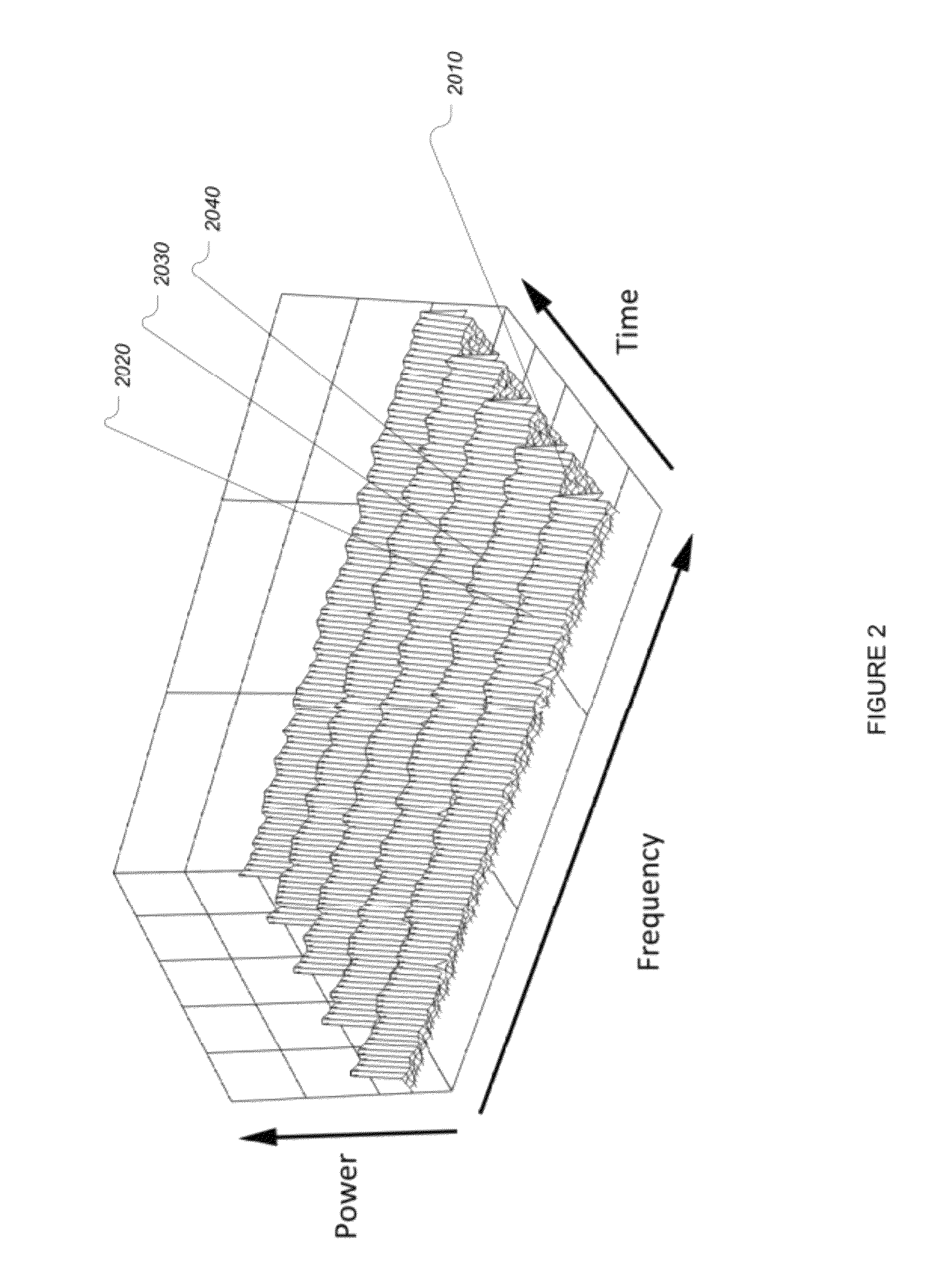Method and system for man-made noise rejection detector
a detector and man-made noise technology, applied in the direction of transmission, transmission monitoring, electrical equipment, etc., to achieve selective improvement of the resulting signal and improve the performance of dsa-enabled devices
- Summary
- Abstract
- Description
- Claims
- Application Information
AI Technical Summary
Benefits of technology
Problems solved by technology
Method used
Image
Examples
examples
[0138]The following examples are provided to illustrate certain aspects of the present invention and to aid those of skill in the art in the art in practicing the invention. These examples are in no way to be considered to limit the scope of the invention in any manner.
[0139]1.7.4 Spur Noise Rejection Example
[0140]A tradeoff can be made in deciding on the number of bins to discard, (N), when performing spur detection and elimination. Increasing (N) reduces the noise level (which reduces the false alarm rate) but also reduces the energy of signals within the signal channel width (which reduces the signal detection probability). An optimum value exists for any specific scenario that provides the best false alarm and detection probability characteristics.
[0141]As an example, a detector may be designed for a 25 kHz bandwidth channel using an FFT with 1 kHz bin sizes. A tradeoff can be made when determining how many 1-kHz FFT bins (N) to be excised. Ideally, by selecting an appropriate v...
PUM
 Login to View More
Login to View More Abstract
Description
Claims
Application Information
 Login to View More
Login to View More - R&D
- Intellectual Property
- Life Sciences
- Materials
- Tech Scout
- Unparalleled Data Quality
- Higher Quality Content
- 60% Fewer Hallucinations
Browse by: Latest US Patents, China's latest patents, Technical Efficacy Thesaurus, Application Domain, Technology Topic, Popular Technical Reports.
© 2025 PatSnap. All rights reserved.Legal|Privacy policy|Modern Slavery Act Transparency Statement|Sitemap|About US| Contact US: help@patsnap.com



